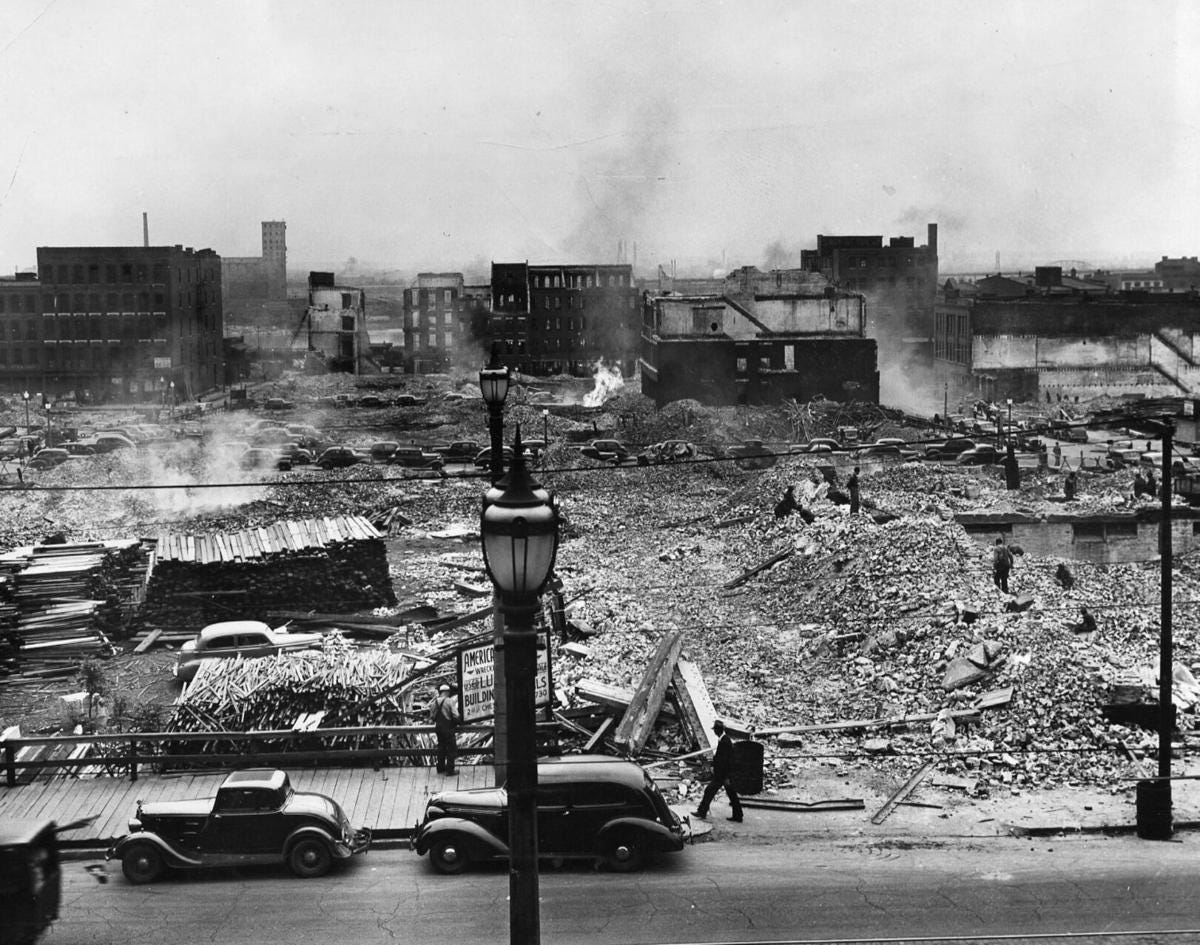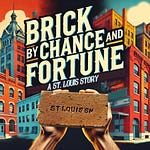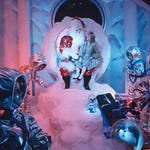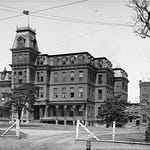In May, our talks focused not on historic preservation but on demolitions. Specifically, we devoted the evening to a discussion of the history of the riverfront clearances in the 1940s that ultimately led to the Jefferson National Expansion Memorial and the controversial 1980s demolitions that led to the Gateway Mall.
Riverfront Clearances
Jackie Dana started us off with an overview of the transformation of St. Louis' riverfront, emphasizing the historical context, key figures, and controversies. The initiative, rooted in the "City Beautiful" movement of the early 20th century, aimed to replace the industrial riverfront with a scenic public space. Revived in the 1930s by Luther Ely Smith, the project became the Jefferson National Expansion Memorial, commemorating westward expansion and the Louisiana Purchase. In the 1930s, Smith’s ally in the project was Democratic Mayor Bernard Dickmann. With his real estate background, Dickmann’s goals were raising property values and bringing federal money into St. Louis. The 1935 bond election, essential for funding, was marred by fraud allegations, and critics argued it primarily benefited real estate interests. Efforts to preserve historic buildings like the Old Rock House were unsuccessful, highlighting the tension between development and preservation.

You can view the slides from Jackie’s presentation below:
Gateway Mall Demolitions
Steve Sorkin then told a very similar story about the various plans to demolish the buildings between Market St. and Chestnut Street, including the Buder Building, the International Building, the Western Union Building, and the Title Guarantee Building. He described various plans to redevelop the area, including the 1905 and 1912 Parkway Plans, the 1919 Civic Center Plan, the 1960 Plan, the 1977 Lipton-Claybour Preservation Plan, and the 1982 Pride Half-Mall Plan. From there, he highlighted the widespread opposition to tearing down the historic buildings and his own role in attempting to save the structures.
You can view the slides from Steve’s talk below:
How to find more Unseen St. Louis history
Be sure to subscribe to Unseen St. Louis for the latest articles about local history and information about the monthly talks.
For even more history, be sure to follow the Unseen St. Louis page on Facebook. We also have a group on Facebook called STL History & Preservation.
And if you haven’t joined us yet, be sure to sign up for Unseen STL History Adventures on Meetup. This summer, we’ll be heading indoors for some museums and air-conditioned bus tours, among other things.
Support Unseen St. Louis
Unseen STL is a labor of love, but it also takes quite a bit of time. A paid subscription to this Substack helps keep it going. Please consider upgrading if you have the means.
As always, thank you for your support and interest in St. Louis history. It means the world to me.














Share this post